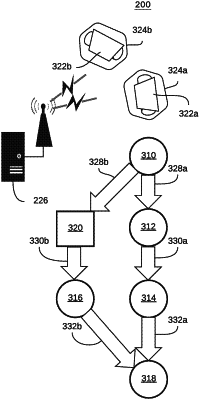| CPC G05D 1/0291 (2013.01) [G05B 19/41895 (2013.01); G05D 1/0297 (2013.01); G05D 1/225 (2024.01); G05D 1/229 (2024.01); G05B 2219/50393 (2013.01); Y02P 90/02 (2015.11)] | 14 Claims |

|
1. A method for coordinating a plurality of self-driving vehicles for assembling workpieces, the method comprising:
operating a first self-driving vehicle of the plurality of self-driving vehicles to transport a first workpiece to a first workstation according to a first mission comprising a sequence of assembly operations related to the first workpiece, the first workstation being designated to perform at least one subset of the sequence of assembly operations related to the first workpiece;
operating a second self-driving vehicle of the plurality of self-driving vehicles to transport a second workpiece to a second workstation according to a second mission comprising a sequence of assembly operations related to the second workpiece, the second workstation being different from the first workstation and designated to perform at least one subset of the sequence of assembly operations related to the second workpiece;
continuously receiving a status update from each of the first self-driving vehicle and the second self-driving vehicle during operation;
determining from the status update from each of the first self-driving vehicle and the second self-driving vehicle whether an operational change to the operation of at least one of the first self-driving vehicle and the second self-driving vehicle is required to increase a throughput of assembling the first and second workpieces; and
in response to determining that the operational change to the operation of the at least one of the first self-driving vehicle and the second self-driving vehicle is required, evaluating the status update to determine the operational change required and adapting the operation of the at least one of the first self-driving vehicle and the second self-driving vehicle in accordance with the operational change required to increase the throughput of assembling the first and second workpieces.
|